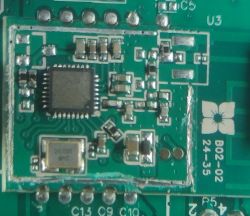FAQ
TL;DR: Use Tuya scenes with two sensors to switch heat on entry and off on exit; "Two motion sensors will be needed." Add a timed comfort boost and a lower empty-room setpoint. [Elektroda, VPSA132, post #21401362]
Why it matters: This helps small facilities and offices keep occupants comfortable without manual switching or wasting energy.
Quick Facts
- Heater in thread: 230 V, 2000 W, wall-mounted fan heater. [Elektroda, bolek11, post #21400228]
- Target control: base 18°C with a +2–3°C boost during occupancy. [Elektroda, bolek11, post #21400145]
- Use profile: ~5 visits per day, ~10 minutes each across a 16-hour window. [Elektroda, bolek11, post #21401661]
- Entry/exit logic: two Tuya motion sensors (room and door), same delays, rule-based triggers. [Elektroda, VPSA132, post #21401362]
- Presence sensors detect people even when still; Tuya options exist. [Elektroda, xury, post #21401458]
What�s the simplest way to automate a thermofan to heat up when someone enters?
Build two Tuya scenes driven by occupancy. Use one sensor inside and one just outside the door. On entry, turn heating on and start a hold timer. On exit, turn heating off and clear the timer. Keep a lower base setpoint when the room is empty. This logic avoids manual control and follows traffic direction reliably. [Elektroda, VPSA132, post #21401362]
How do I detect entry vs exit reliably with Tuya?
Place sensor #1 inside the room and sensor #2 outside the door. Scene A: if #1 detects motion and #2 does not, treat it as entry and enable heat. Scene B: if #2 detects motion and #1 does not, treat it as exit and disable heat. "Sensor locations to be determined experimentally. Any delays are the same." [Elektroda, VPSA132, post #21401362]
What hardware do I actually need for this build?
You need two Tuya-compatible motion sensors and a Tuya-controlled switch/plug/thermostat to drive the heater. Add a temperature sensor or thermostat if you want setpoint-based control rather than simple on/off. Use a Tuya hub if your sensors are Zigbee. This lets you create scenes that switch heating based on entry/exit patterns and time windows. [Elektroda, VPSA132, post #21401362]
How do I set a 10�30�20 minute comfort boost in Tuya?
Use a scene that, on entry, turns heating on and starts a delay timer. Maintain heat while motion is seen, then revert to base after the delay. The referenced setup kept heat for "minimum 10 min (adjustable) to 20 min max." Tune the delay to match stay duration and comfort needs. [Elektroda, bolek11, post #21403327]
What if people stand still�won�t PIR time out?
Use a human presence sensor instead of a basic PIR. Presence sensors detect micro-movements and occupancy even when people are seated or still. That keeps the heater on during quiet tasks and prevents nuisance shutoffs. As one expert noted, they detect "people" even when they don't move. [Elektroda, xury, post #21401458]
Does boosting for just 10 minutes make sense for comfort?
Short boosts raise air temperature near occupants and increase perceived warmth due to airflow. Whole-room temperature changes may be modest in 10 minutes. One responder cautioned that raising the setpoint for such a short stay "sounds like a joke" for room-wide heating. Consider directed airflow comfort plus a modest boost. [Elektroda, vodiczka, post #21403066]
Is a timer schedule enough if hours are fixed?
Yes. For fixed shifts, preheat before arrival and lower when empty. "The fan heater should be turned on to a higher temperature 15�30 min before the staff arrive and when they are not there, maintaining 16�B0C is sufficient." Use schedules, and add occupancy override if needed. [Elektroda, vodiczka, post #21400189]
What base temperature and boost delta should I use here?
The described scheme uses 18�B0C as the base when empty. When someone enters, it raises the temperature by about +2 to +3�B0C for a short, timed period. On exit, it returns to the 18�B0C baseline. That balances comfort and energy use. [Elektroda, bolek11, post #21400145]
How much energy does a 10-minute boost add on a 2 kW heater?
A 2 kW heater running for 10 minutes consumes about 0.33 kWh. Multiply your number of boosts per day to estimate daily energy. This simple calculation helps quantify comfort versus cost and supports selecting the right delay time. [Elektroda, bolek11, post #21400228]
How do I switch a 2 kW heater safely with Tuya?
At 230 V and 2000 W, the current is about 8.7 A. Choose a Tuya switch or plug with a continuous current rating above that, suitable for resistive loads. If unsure, use a higher-rated device or control a dedicated contactor. Ensure wiring and mounting meet local electrical codes. [Elektroda, bolek11, post #21400228]
Where should I place the sensors to avoid false triggers?
Put one sensor inside the room, facing the occupied area. Place the second just outside the door, aimed at the approach path. Avoid direct line-of-sight to busy corridors or HVAC airflow that can cause false triggers. "Sensor locations to be determined experimentally." Test and adjust angles and delays. [Elektroda, VPSA132, post #21401362]
Will two-sensor logic break if groups enter and leave at once?
It can. Simultaneous motion on both sensors may confuse entry/exit logic. Add a short hold-off, or prioritize one direction to avoid rapid toggling. Clarify whether employees enter and leave together or individually. "It would be useful to specify whether the employees enter and leave in one group." [Elektroda, VPSA132, post #21401513]
What is a �thermo-fan� in this thread?
It is a wall-mounted, 230 V, 2000 W fan heater used to quickly warm a small room. The airflow provides immediate comfort, while automation manages when it runs. This is the load being switched by the Tuya scenes and sensors. [Elektroda, bolek11, post #21400228]





